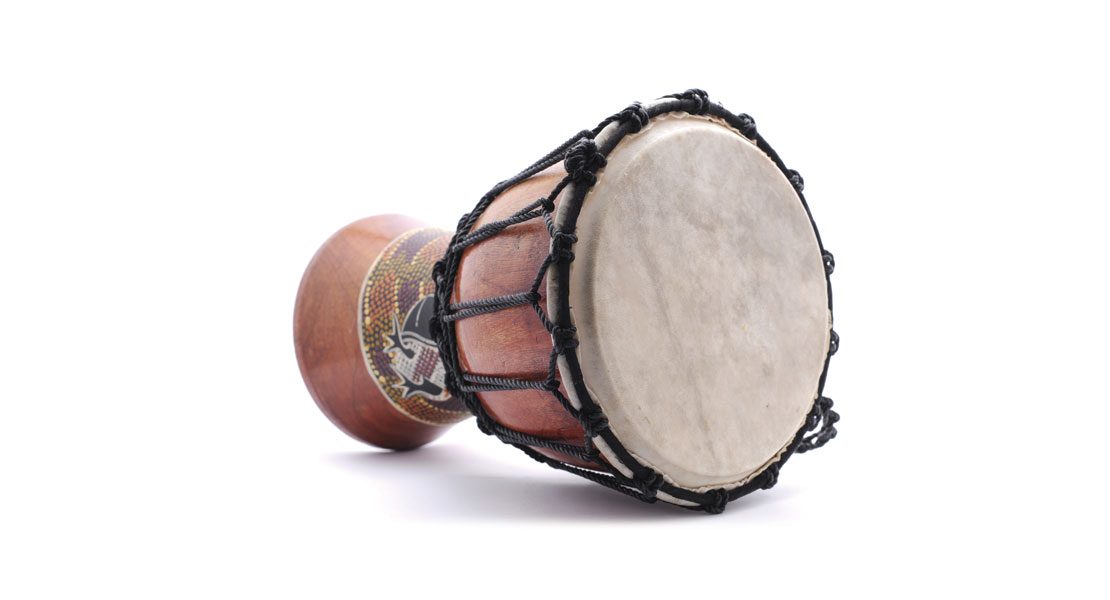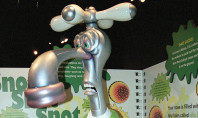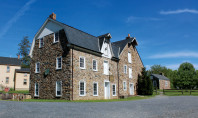Drumming is Hard to Beat

By Ann Wlazelek
It starts with a beat, as simple as rum-pum-pum-pum. It escalates as dozens of drummers, seated in a circle, pick up the rhythm and beat it over and over again. The sound builds. The rhythm resonates. Before they know it, participants move to the music, mesmerized, transcended.
“There’s a space in time where everybody gets together,” coordinator Moe Jerant explained about the sensation felt around the room after a recent 20-minute jam. “Everybody is working off the same pulse, even if they are playing different beats,” she said, “That is when the magic happens.”
Jerant, a professional drummer and instructor from Bethlehem, has been making the magic happen at community drum circles in the Lehigh Valley for the past 11 years. Although she conducts some circles just for women’s groups, cub scouts, prison inmates and Alzheimer’s patients, her regular gig for the public occurs at 6:30 p.m. the first Wednesday of every month in a back room at Dave Phillips music store on Union Boulevard in Allentown.
Participants do not need to know how to drum, or even be musically inclined. Jerant instructs newcomers on how to properly strike the instruments – African hand drums called djembes – to get the best sound and avoid injury. Many of the 30 or more attending, however, are regulars, either students from her drum classes or long-time drum circle fans.
Jerant, a whirling dervish with long, Joan Jett-style black hair and striking blue eyes, welcomes everyone individually, handing out tambourines and egg-shaped shakers. She leads her tribe in different riffs and games, and controls the starts, stops and volume with hand signals.
For the nearly two hours of drumming, she asks a $5 donation, most of which pays for the room rental and promotions. Jerant is the first to admit she organizes and conducts the drum circle for love not money. The therapy is mutual, she said, getting as much as she gives.
Given her first drum, a snare, from friends at Notre Dame elementary school at the end of 7th grade, when she switched to the Southern Lehigh school district, Jerant became an instant fan and a natural musician. Her interest in drum circles started years later with a class and interest in meeting and helping other drummers.
Taking lessons from African and Native American drummers, U.S. drum circles began in the western half of the country in the late 1960s, particularly among hippies and counterculture groups who wanted to gather and play music. Today, there are largely two types: free-form and facilitated.
Jerant prefers facilitated circles claiming the free-form variety lose energy without direction. Facilitated drumming encourages teamwork and can relieve stress and elevate mood much the same way as repeating a mantra in meditation or deep breathing in Lamaze class. Some of the courses she’s taken use scientific research to extol the health benefits of drum circles.
“Drumming helped a friend of mine get past the grief of the loss of her husband… It helped another friend get through breast cancer,” Jerant said. “Drumming even helped me with my Dad’s passing.” In her Dad’s case, Jerant said a circle formed around her father’s hospice bed. Ten drums, a shaker and Native American flute played for nearly two hours.
“The energy we created came from everyone’s heart and was filled with more love than you can imagine. You could see my Dad’s face relax when he understood what was happening,” Jerant wrote about the experience. “He contributed the rhythm of his breathing to our circle of drums and we supported each other, just like he taught me about life.”
Colleen Zajacik of Bethlehem is such a believer that she’s been attending Jerant’s drum circle for more than 10 years. “I was working 70-80 hours a week when I started and needed an outlet to get my mind off work,” said Zajacik, a self-employed real estate appraiser for her family-owned and operated Grace Realty Co. “I keep going back because I love to drum, especially with a group. It’s great stress relief because I can think of nothing else while I drum,” she said.
Participants do not have to be veterans of the drum circle to benefit, however. At May’s community drum circle, Dorinda Frey-Perdick of Bethlehem found herself a first-timer, giving drumming a try at the urging of her doctor and a friend.
“I didn’t know what to expect but was pleasantly surprised,” she said the next day. “It was one of the most interesting, life-changing experiences I’ve had. Even though I have chronic pain, it reduced it, took it away.” At one point during a lengthy drum jam session, Frey-Perdick said she thought she could hear the drums chanting.
“You get such a rhythm going that it carries you somewhere. You get taken away,” she said. “It soothes your soul.” Spinal injuries and pain forced Frey-Perdick to leave a job in 2005 that she had for 32 years in community relations at St. Luke’s Hospital. “To walk out of [the drum circle] and feel better,” she said, “is remarkable.”
For those who’ve tried it, being in a drum circle with Jerant is invigorating, therapeutic and just plain fun. Drumming, they say, is hard to beat.
For more information about Jerant’s community drum circle, see the Web site LVdrumcircle.com or call Jerant at 610-428-0544.

















